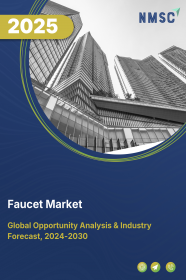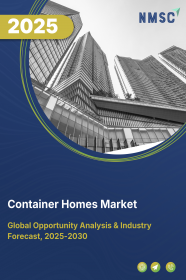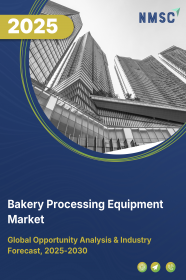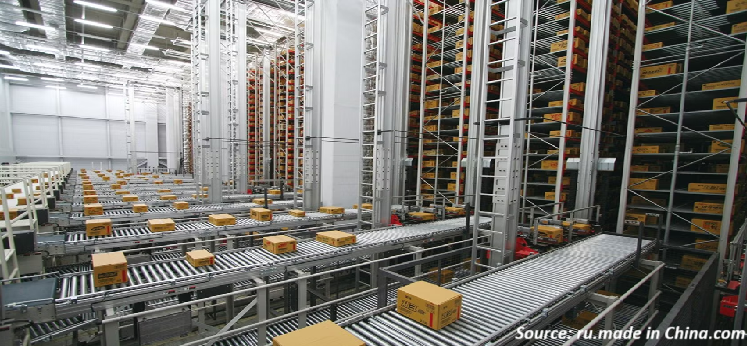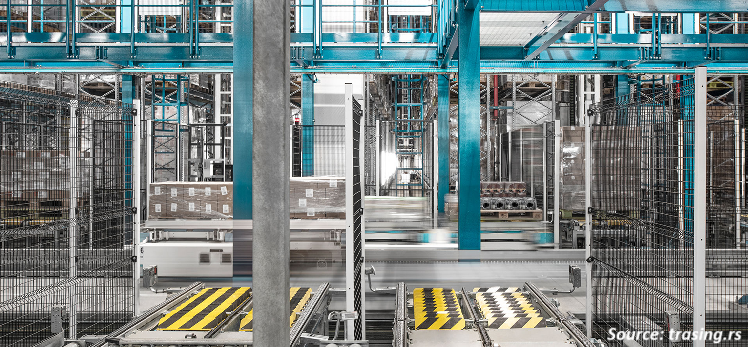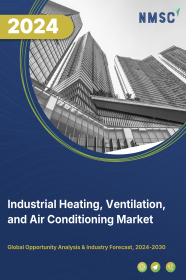
Industrial Heating, Ventilation, and Air Conditioning Market by Cooling Equipment (Unitary Air Conditioners and Variable Refrigerant Flow Systems), by Heating Equipment (Heat Pumps and Furnaces), and by Ventilation Equipment (Air Handling Unit, and Air Filters) – Global Opportunity Analysis and Industry Forecast 2024-2030
Industrial Heating, Ventilation, and Air Conditioning (HVAC) Market Overview
The global Industrial HVAC Market size was valued at USD 49.26 billion in 2023 and is predicted to reach USD 79.71 billion by 2030 with a CAGR of 6.6% from 2024-2030.
The industrial heating, ventilation, and air conditioning (HVAC) market refers to the sector that deals with the design, installation, maintenance and servicing of heating, ventilation and air conditioning systems for industrial facilities. These facilities range from manufacturing plants, warehouses, data centers and other large-scale industrial complexes such as pharmaceutical plants, chemical plants, food and beverage processing plants, and others. The industrial HVAC systems contribute to maintaining optimal working conditions, preserving product quality and ensuring safety within industrial settings through several key mechanisms such as temperature regulations, humidity control, air quality management and others.
Market Dynamics and Trends
The rising global temperatures and extreme weather conditions necessitate the installation of robust HVAC systems to maintain suitable indoor climates in industrial settings. This trend offers HVAC manufacturers and suppliers to expand their market presence by delivering standardized solutions that meet requirements of global industrial clients. As per the National Oceanic and Atmospheric Administration (NOAA) latest report, the year 2023 was the warmest year on record, with a global temperature of 1.18°C (2.12°F) above the 20th-century average of 13.9°C (57.0°F). This surpasses the previous record set in 2016 by 0.15°C (0.27°F).
Moreover, the growth of industrialization and urbanization in emerging economies is driving a surging demand for HVAC solutions to support infrastructure development and enhance indoor air quality in industrial facilities. As per the World Bank 2023 report, more than 50% of world's population is estimated to reside in urban areas and by 2045, this urban population is projected to reach a staggering 6 billion people. This growth is creating ample demand in industrial HVAC across the globe.
Additionally, the growing demand for indoor air quality particularly in industrial settings where pollutants and contaminants prevalent, is driving the adoption of HVAC systems with advanced filtration and ventilation capabilities. For example, in February 2022, Honeywell launched Indoor Air Quality (IAQ) monitor that notifies the building operators of potential issues, empowering them to proactively enhance indoor air quality and potentially reduce the risk of transmitting airborne contaminants. However, the high upfront cost and frequent maintenance associated with the industrial HVAC is hindering the demand for the market.
On the contrary, the ongoing advancements in HVAC technologies such as the development of smart HVAC systems, energy-efficient components, and Internet of Things(IoT) integration are driving the growth of the market. As per McKinsey latest report, the total global impact of IoT technologies could generate USD 2.7 trillion value by 2025. IoT sensors aims to monitor energy usage in real-time and provides data that helps in identifying inefficiencies and optimizing HVAC system performance. Thus, it shows a positive opportunity for the industrial HVAC market growth in the coming years.
Market Segmentations and Scope of the Study
The industrial HVAC market report heating, ventilation, and air conditioning industry is divided on the basis of cooling equipment, heating equipment, ventilation equipment, and region. Based on the cooling equipment, the market is divided into unitary air conditioners and variable refrigerant flow (VRF). On the basis of heating equipment, the market is divided into heat pumps and air filters. On the basis of ventilation equipment, the market is divided into air handling unit (AHU) and air filters. Regional breakdown and analysis of each of the aforesaid segments includes regions comprising of North America, Europe, Asia-Pacific, and RoW.
Geographical Analysis
Asia-Pacific holds the dominating of industrial HVAC market share at present and is projected to continue its dominance throughout the forecast period. This region is witnessing fastest growth as well in terms of CAGR till 2030. The factors contribute to the growth of the market in the Asia-Pacific region includes improving economic conditions, increasing energy demand, rapid industrialization, technological advancements, and government initiatives. As per International Energy Agency (IEA) latest report, India is projected 50% increase in energy demand from 2019 to 2030 and it is driving rapid industrialization and infrastructure development, thus creating a heightened need for industrial HVAC systems to maintain optimal working conditions in factories, warehouses, and other industrial facilities.
Moreover, the dominant companies of industrial HVAC sector such as Daikin industries, Panasonic, and LG are based in the Asia-Pacific region, further driving market expansion. For instance, in January 2024, Daikin industries launched Daikin cloud plus, a cloud based remote monitoring solution specifically designed for commercial HVAC installations. It aims to leverage enhanced control, monitoring, and predictive logic to deliver comprehensive real-time data HVAC systems.
Additionally, the integration of automation and Internet of Things (IoT) in HVAC systems for real-time monitoring and predictive maintenance enhances system performance and efficiency and it is driving the growth of industrial HVAC industry across the Asia-Pacific region. For instance, in the second quarter of 2022, India emerged as the fastest-growing market for Internet of Things (IoT) modules, achieving a remarkable growth rate of over 264%. The rapid growth of IoT is driving the increasing industrial HVAC market demand for smart, connected HVAC systems that enhances the efficiency and monitoring capabilities.
Competitive Landscape
Various key players in the heating, ventilation, and air conditioning industry includes Daikin Industries, Ltd., Johnson Controls, Carrier Global Corporation, Trane Technologies plc, Hitachi, Ltd, LG Electronics, Emerson Electric Co., Honeywell International Inc., Mitsubishi Electric Corporation, Nortek Air Solutions, LLC, and others. These companies are opting various strategies such as investments and product launches to maintain their dominance in the market.
For instance, in April 2024, Daikin Industries invested in an Energy Ventures Select Fund I, that aligns with company’s goal of achieving net-zero emissions by 2050. This investment is intended to accelerate the development of innovative technologies, including direct air capture and carbon capture and utilization for HVAC systems.
Moreover, in March 2023, LG Electronics launched lineup of DUALCOOL inverter air conditioners with innovative features such as voice command functionality, and touch-free operation. It aims to provide commercial advanced hydronic solution such as multi VI, inverter scroll chiller and select hydro kit lineups employing low-global warming.
Key Benefits
-
The report provides quantitative analysis and estimations of the industrial HVAC market from 2024 to 2030, which assists in identifying the prevailing market opportunities.
-
The study comprises a deep-dive analysis of the current and future industrial HVAC market trends to depict prevalent investment pockets in the industry.
-
Information related to key drivers, restraints, and opportunities and their impact on the industrial HVAC market is provided in the report.
-
Competitive analysis of the players, along with their market share is provided in the report.
-
SWOT analysis and Porters Five Forces model is elaborated in the study.
-
Value chain analysis in the market study provides a clear picture of roles of stakeholders
Industrial Heating, Ventilation, And Air Conditioning Market Key Segments
By Cooling Equipment
-
Unitary Air Conditioners
-
Variable Refrigerant Flow
By Heating Equipment
-
Pumps
-
Air Tracker
By Ventilation Equipment
-
Air Handling Unit
-
Air Filters
By Region
-
North America
-
The U.S.
-
Canada
-
Mexico
-
- Europe
-
The UK
-
Germany
-
France
-
Italy
-
Spain
-
Denmark
-
Netherlands
-
Finland
-
Sweden
-
Norway
-
Russia
-
Rest of Europe
-
-
Asia-Pacific
-
China
-
Japan
-
India
-
South Korea
-
Australia
-
Indonesia
-
Singapore
-
Taiwan
-
Thailand
-
Rest of Asia-Pacific
-
-
RoW
-
Latin America
-
Middle East
-
Africa
-
REPORT SCOPE AND SEGMENTATION:
|
Parameters |
Details |
|
Market Size in 2023 |
USD 49.26 billion |
|
Revenue Forecast in 2030 |
USD 79.71 billion |
|
Growth Rate |
CAGR of 6.6% from 2024 to 2030 |
|
Analysis Period |
2023–2030 |
|
Base Year Considered |
2023 |
|
Forecast Period |
2024–2030 |
|
Market Size Estimation |
Billion (USD) |
|
Growth Factors |
|
|
Countries Covered |
28 |
|
Companies Profiled |
10 |
|
Market Share |
Available for 10 companies |
|
Customization Scope |
Free customization (equivalent to up to 80 working hours of analysts) after purchase. Addition or alteration to country, regional, and segment scope. |
|
Pricing and Purchase Options |
Avail customized purchase options to meet your exact research needs. |
Key Players
-
Daikin Industries, Ltd.
-
Johnson Controls
-
Carrier Global Corporation
-
Hitachi, Ltd.
-
Trane Technologies Plc
-
LG Electronics
-
Emerson Electric Co.
-
Honeywell International Inc.
-
Mitsubishi Electric Corporation
-
Nortek Air Solutions, LLC

















 Speak to Our Analyst
Speak to Our Analyst



